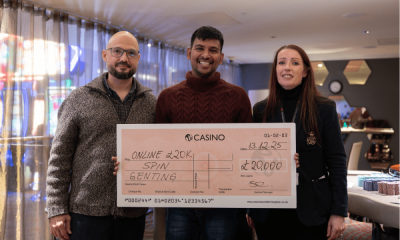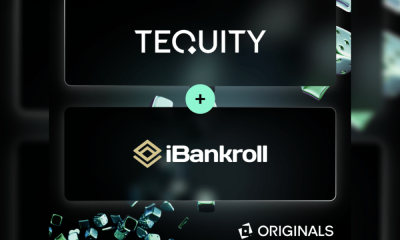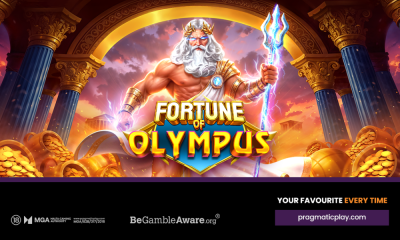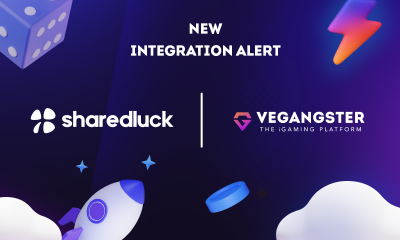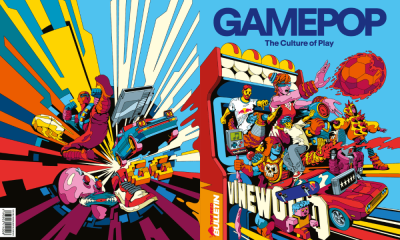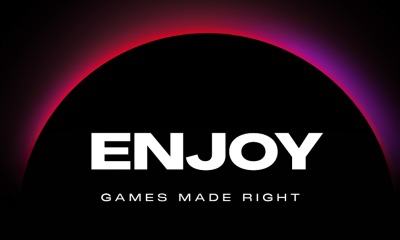Latest News
Gambling Harms Support Delivered by Third Sector Helped Nine Out of 10 Improve Condition – Annual Statistics Reveal

New GambleAware data from the National Gambling Treatment Service (NGTS) and the newly commissioned National Gambling Support Network (NGSN) highlight high efficacy and impact.
Nine in 10 people (88%) who completed treatment through the National Gambling Treatment Service – commissioned by the charity GambleAware – saw an improvement in their condition, according to the latest data released.
The National Gambling Treatment Service comprises 10 organisations operating across England, Scotland and Wales. The network provides free and confidential treatment, early intervention and prevention services for anyone experiencing gambling-related harms. Every year, nearly 7000 people access structured support through the network, and over 44,000 calls are answered by the National Gambling Helpline.
Despite considerable demand, waiting times were very short with 1 in 2 (50%) people seen within five days after their referral, and 3 in 4 (75%) seen within just nine days.
Anna Hargrave, Chief Commissioning and Strategy Officer at GambleAware, said: “Today’s data clearly demonstrates the value of the prevention-focused approach applied through our network. It is a timely reminder of the importance of investing in early treatment – especially as recently reported figures from the Gambling Commission suggest prevalence of harmful gambling may be much larger than previously estimated.”
In April, GambleAware relaunched the treatment service as the National Gambling Support Network (NGSN) – and demand for services has already risen. In April-June 2023, there was a 24% year-on-year increase in calls to the National Gambling Helpline, and a 46% year-on-year increase in early intervention – including guided, online and in person support – delivered through the Helpline. This is in addition to an 18% rise in demand for structured treatment.
Graham England, CEO at Ara Recovery for All, said: “NGSN services represent the first line of defence in supporting and reaching people before problems with gambling become catastrophic consequences. We are talking about brilliant, dedicated teams making a decisive difference in the lives of thousands of people across Great Britain. The latest data from this network commissioned through GambleAware, highlights just how effective, and desperately needed, those tailored, community-focused, interventions are.”
The figures published by GambleAware highlights the effectiveness of the services provided and the emphasise on early intervention and prevention – but the charity has issued a stark warning that they could collapse under the Government’s current proposals for the implementation of the statutory levy on gambling operators.
Zoë Osmond, CEO of GambleAware, said: “We welcome the government’s forthcoming statutory levy on gambling operators – it is a measure we have long called for to make sure that funding for vital research, treatment and prevention of gambling harms is both long-term and transparent. However, the focus on specialist-led services means right now, hundreds of dedicated third sector support workers are deeply concerned about their future and the future of the communities they serve.
“There is an urgent need for reassurance from Government that these essential services will be protected during and following the transition. We cannot lose the vast years of experience and expertise contained in the National Gambling Support Network and the wider third sector.”
In addition to hampering the third-sector’s ability to deliver vital services, leading experts have also raised concerns that the Government’s proposed new system would increase pressure on the NHS’ finances and waiting lists.
Professor Dame Clare Gerada said: “From my experience running the NHS Primary Care Gambling Service, which is part of the National Gambling Support Network, I have seen first-hand the benefits of being part of a thriving and connected third sector ecosystem. My experience has also made it abundantly clear that whilst the NHS gambling clinics have a place in the system, what we also need is an approach which aims to prevent gambling harms from escalating – before people find themselves at the much more serious point of needing specialist care.
“Gambling harms are a societal, public health issue – not just a medical one. Whilst the specialist sector has a valuable and important role, relying predominantly on this sector is neither financially viable nor logistically feasible.”
Latest News
Mr. Gamble Forum Revamp Sparks Record Growth and Global Expansion

Mr. Gamble Forum, a fast-growing online gambling community, has rolled out a major platform revamp that is already delivering record-breaking growth in traffic, visibility, and user engagement. Timed perfectly ahead of the industry’s busiest season, the update strengthens the forum’s position as a go-to destination for casino and sports betting discussions worldwide.
The refreshed platform combines a cleaner design, expanded content, and new marketing capabilities, all built around a single goal: creating a space where players can freely share real experiences while operators connect with highly motivated users.
“We’ve invested a lot of effort into improving both the user experience and the commercial potential of the forum,” said Paul Puolakka, CMO of Mr. Gamble. “This update reinforces our vision of an open, trusted community that benefits players and partners alike—and the growth we’re seeing confirms we’re on the right track.”
Strong Growth Momentum Following the Revamp
The impact of the update has been immediate. In Novembe 2025, compared to December 2024, Mr. Gamble Forum recorded a sharp rise across all key performance metrics. Daily clicks increased by 270%, daily impressions climbed by 471%, and monthly clicks grew by 380%. These numbers reflect not only improved visibility in search engines but also a growing appetite for a community where players can openly discuss casinos, bonuses, slots, and betting strategies.
Sports Betting Content Broadens the Forum’s Scope
One of the most significant additions is the expansion into sports betting content. The forum now features dedicated discussions around upcoming games, betting strategies, and odds, giving sports bettors a place to exchange insights in real time. Alongside these discussions, users can explore a steadily growing selection of sports betting bonuses, including both long-term promotions and limited-time offers from leading brands.
This addition allows Mr. Gamble Forum to serve a broader audience while keeping casino players and sports bettors under one unified community.
Localized Promotions for Key Regions
As part of the revamp, Mr. Gamble Forum has also refined how promotions are presented. Players from Australia and New Zealand now have their own dedicated sections where they can immediately discover the most relevant casino and betting offers available to them. This localized approach makes it easier for users to find deals that actually apply to their region, while increasing engagement and conversion potential for operators.
A Clear Step Toward Global Expansion
The forum’s international ambitions are already taking shape. A dedicated Swedish-language version of the forum has recently gone live, giving Swedish players a space to participate in discussions in their native language. Early engagement data shows positive signs, suggesting strong potential as localized promotions and content continue to expand.
Over the past year, the forum has seen its strongest growth in the United States, the United Kingdom, Canada, and New Zealand, and Sweden is now emerging as another promising market.
New Opportunities for Casino and Betting Partners
Beyond user-facing improvements, the revamp introduces new commercial features designed to support partners. Updated call-to-action elements help guide users toward relevant offers, making it easier for casinos to attract players who are already in a decision-making mindset.
For a limited time, Mr. Gamble Forum is also offering partners the opportunity to test forum marketing free of charge, as long as they can provide geo- and IP-targeted dynamic banners. This allows operators to explore the forum’s potential, reach high-intent audiences, and gather performance insights without upfront risk.
A Community Built on Real Player Experiences
Despite the platform’s growth and new features, the core of Mr. Gamble Forum remains unchanged: community-driven discussion. Players continue to share honest reviews of casinos, compare bonuses, talk openly about slot games, and exchange betting strategies. This transparency has been a key factor behind the forum’s rising visibility and trust among users.
As more players join and more regions come online, these conversations are becoming richer, more diverse, and increasingly valuable for both users and operators.
What Comes Next for Mr. Gamble Forum
The December revamp marks the beginning of a new phase for the platform. Further international expansion is already on the roadmap, alongside improvements to mobile performance, contributor rewards, and partner analytics. Each development is designed to strengthen the ecosystem and keep the forum relevant as the online gambling landscape continues to evolve.
Conclusion
With its latest update, Mr. Gamble Forum has transformed from a growing community into a truly global platform. The combination of rapid traffic growth, expanded sports betting content, localized promotions, and innovative partner opportunities highlights a clear direction forward. Backed by strong momentum in the US, UK, Canada, New Zealand, and early success in Sweden, the forum is well positioned to become one of the most influential discussion hubs in the online gambling industry.
As Paul Puolakka summarizes, “When players feel heard and operators see real value, growth follows naturally. That’s exactly what we’re building with Mr. Gamble Forum.”
The post Mr. Gamble Forum Revamp Sparks Record Growth and Global Expansion appeared first on Gaming and Gambling Industry Newsroom.
eSports
TEAM VITALITY RUN IT BACK FOR THEIR 2026 LEC ROSTER
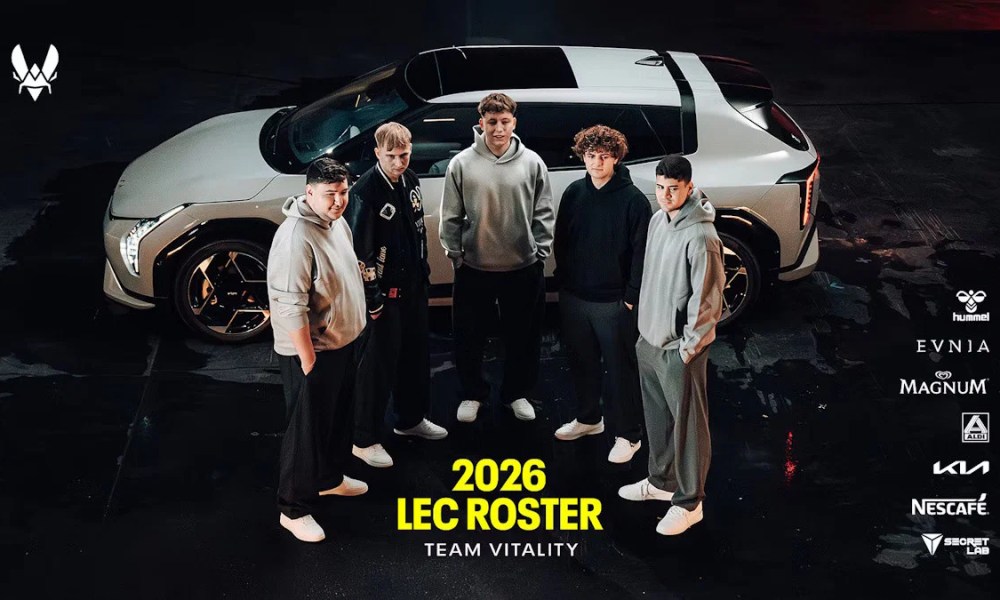
- Team Vitality is kicking off the new LEC season with renewed energy and a hunger to prove themselves on the international stage.
- With superstar mid laner Marek “Humanoid” Brázda joining the lineup, alongside the support of an experienced coaching staff, the club is confident in its ability to compete at the highest level in 2026.
- The squad’s goal is straightforward: become a top team in the LEC and qualify for Worlds in North America next year.
- Next year marks a new chapter in the club’s long-term strategy to develop and elevate European talent, creating an environment built to deliver results.
Team Vitality is proud to present its new LEC roster for 2026. Throughout the upcoming season, the club aims to build on its existing core and further develop the team’s talent, while welcoming a new mid laner and a strategic Head Coach to elevate performance.
BACK WITH NEW FIREPOWER
The stage is set, and Team Vitality returns to the LEC more determined than ever. At the heart of this ambitious new roster is Kaan “Naak Nako” Okan, the Turkish superstar top laner, who will anchor the team. With the roster built around his talent, communication, and leadership, Team Vitality aims to make a deep run and achieve its first EMEA title.
Roster composition
- Kaan “Naak Nako” Okan (Turkish) – 20 years old: The centrepiece of Team Vitality’s project, Naak Nako is an incredibly talented player known for his versatility and impact. A former high-level volleyball player, he began his professional League of Legends career in 2022 with Fenerbahce. Team Vitality then picked him up in December 2023, spent a year developing in the academy, and promoted him to the main roster, bringing both potential and dedication to the LEC squad.
- Linas “Lyncas” Nauncikas (Lithuanian) – 21 years old: The hardworking engine of Team Vitality, Lyncas brings his relentless drive and consistency to the refreshed roster. Having played for several teams in the ERL and EMEA Masters, he was recruited by Team Vitality in May 2024. Now entering his third year in the LEC, Lyncas combines experience, adaptability, and a deep understanding of the league to power the team’s 2026 ambitions.
- Marek “Humanoid” Brázda (Czech) – 25 years old: A veteran of the LEC scene and one of its most consistent mid laners over the past five years, Humanoid is repeatedly ranked among the league’s top 3 midlaners and has qualified for Worlds multiple times with rosters such as Fnatic and MAD Lions. Joining the Hive, Humanoid reunites with longtime teammate and fellow Czech Carzzy, bringing renewed motivation, experience, and leadership that the club hopes will translate into success and lead them to the Worlds stage.
- Matyáš “Carzzy” Orság (Czech) – 23 years old: Consistently recognised as one of Europe’s best ADCs, Carzzy enters his seventh LEC year with a wealth of experience and a proven track record, having previously lifted three LEC trophies with MAD Lions. He brings a great personality as well as undeniable skill to Team Vitality. This season, he looks to flourish alongside his new teammate Humanoid, building strong synergy and impact in the hopes of bringing the teams to new heights.
- Kadir “Fleshy” Kemiksiz (Turkish) – 24 years old: Having played for Vitality.Bee for seven months, Fleshy was promoted to the main roster last year ahead of the Summer Split. He quickly made his mark in the scene by bringing stability and reliable performances to the bot lane, leaving a strong impression on fans and teammates alike. Now entering his first full year in the LEC, Fleshy is ready to fully prove himself and make a lasting impact on Team Vitality’s road to Worlds.
Coaching staff
- Patrick “Pad” Suckow-Breum (Danish) – Head Coach: A competitor through and through, Pad brings a lifelong passion for sports, having previously competed at a high level in football. He has been a coach in League of Legends since 2017, taking his first steps into the LEC with MAD Lions in 2020. Joining Team Vitality in December 2023 alongside Head Coach Mac, Pad is now taking the next step in his career as the team’s Head Coach, ready to lead Team Vitality to new heights with his experience, discipline, and vision.
- Danusch “Arvindir” Fischer (German) – Strategic Coach: An ambitious coach, Arvindir began his career in professional League of Legends as an analyst for top LEC organisations, including SK Gaming and Splyce, before transitioning into coaching. He has worked across all the major ERL leagues, including a 3.5-year tenure at BIG, before moving on to KOI and Team BDS Academy, where he led the team to victory in the 2024 EMEA Masters Summer Split. Joining Team Vitality in 2025 as the Head Coach of the LFL roster, he has proven his worth in developing Vitality.Bee, and has now been promoted to Strategic Coach of the LEC team.
- Luka “Lukezy” Trumbić (Croatian) – Assistant Coach: Lukezy has been involved in competitive League of Legends since 2014, initially as a semi-pro player before transitioning to coaching in 2023. He has previously worked with UCAM and NNO, gaining valuable experience across several competitive environments. Joining Team Vitality in December 2024, Lukezy now enters his second LEC season as the team’s Assistant Coach, where he has a hands-on role in player development.
”The addition of Marek to the roster reflects our strategic ambitions for the upcoming LEC season. Over the past 18 months, we have focused on developing Lynacs and Naak, making 2026 a key performance year for the team. We are confident that we now have all the pieces in place to compete for the top positions in LEC. While this season will be decisive, our team thrives under pressure, positioning us well to meet the challenge.” explains Patrick “Pad” Suckow-Breum, Head Coach of the team.
A NEW ERA BEGINS
With a clear goal in mind of reaching the international stage, Team Vitality enters 2026 determined to make this its breakthrough season. The team’s mission is bold, yet simple: establish itself as a top contender in each LEC split and secure qualification to Worlds. The organisation is committed to elevating European talent and building a team capable of competing at the highest level.
“We are building on the momentum from 2025, with results continuing to improve. We’ve added experience and an X-factor in a key position, in the hope that this will serve as a catalyst to confirm the potential of the young players we backed last year. We are confident that they can demonstrate that European talent is capable of competing for the qualifying spots at the World Championships.” says Fabien “Neo” Devide, President and co-founder of Team Vitality.
See you at the LEC 2026 Versus tournament in Berlin, starting on January 17th for the beginning of the competition!
The post TEAM VITALITY RUN IT BACK FOR THEIR 2026 LEC ROSTER appeared first on Gaming and Gambling Industry Newsroom.
Barcelona
Registration Open: N1 Puzzle Promo Show & Winner Announcement in Barcelona
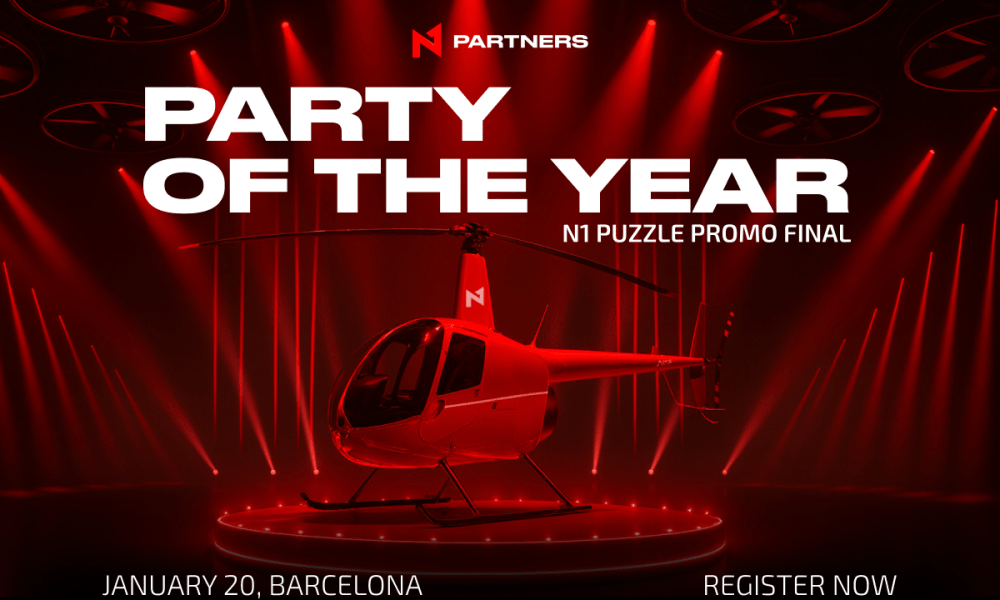
N1 Partners will celebrate the finale of the global N1 Puzzle Promo for partners – running from April 21 to December 31, 2025 – and award the grand prize, a Robinson R22 Beta II helicopter, at an exclusive party in Barcelona during the ICE and iGB conferences. The special guest of the event will be Tommy Cash.
Registration for the party is now open.
Participants – especially those at the top of the leaderboard – still have the final two weeks to influence the results and break into the prize-winning top three. After all, the grand prize – a Robinson R22 Beta II helicopter – is something no one in the industry has ever given away before…
The main motto of the exclusive final show-event of N1 Puzzle Promo will be “Because we can” – a philosophy of high achievement and top performance by the promo leaders, running like a red thread throughout the entire event.
This is more than just a party – it’s a community and a private club for top N1 Partners affiliates and guests, industry leaders, media, and influencers, accessible only to the select few. “Because we can” is about limitless opportunities for scaling, the ability to achieve top results together, and creating experiences unmatched in the industry.
N1 Partners reveals long-awaited event details 
Date: January 20, 2026
Time: 20:00
Location: Barcelona, Spain
What highlights are planned for the guests?
- award ceremony for the top 3 and presentation of the grand prize – the Robinson R22 Beta II helicopter
- exclusive prizes raffle among all guests
- a performance show, DJ set and additional surprises
- activity zones (red carpet, photo area, bar, VIP lounge with hookahs, and much more)
And, of course, the long-awaited special guest of the evening… 
Get ready for the unforgettable performance of edgy Estonian rapper and musician – Tommy Cash!
Register now for the N1 Partners show-event via the link: https://n1puzzle.promo/en.html
After all, why drive when you can fly?
And be number one with N1 Partners?
News source: N1 Partners
The post Registration Open: N1 Puzzle Promo Show & Winner Announcement in Barcelona appeared first on Gaming and Gambling Industry Newsroom.
-

 Latest News7 days ago
Latest News7 days agoNagoshi Studio Unveils GANG OF DRAGON, a New Action-Adventure Game from Director Toshihiro Nagoshi
-

 Latest News7 days ago
Latest News7 days agoBlask & Gamblers Connect Enter A New Media Partnership
-

 Dominic Sawyer VP Growth at Tequity4 days ago
Dominic Sawyer VP Growth at Tequity4 days agoTequity and iBankroll forge strategic partnership
-

 Fortune of Olympus4 days ago
Fortune of Olympus4 days agoPRAGMATIC PLAY STRIKES GOLD WITH FORTUNE OF OLYMPUS
-

 Latest News1 day ago
Latest News1 day agoVegangster Gives Operators Real-Time Jackpot Control and a New Revenue Stream with Sharedluck’s JackpotX
-

 Latest News2 days ago
Latest News2 days agoTop 5 Newest High-RTP Slots at Social Casinos This Month
-

 Gamepop3 days ago
Gamepop3 days agoGAMEPOP: The Culture of Play by Red Bull Media House – the first bookazine devoted entirely to video game culture
-

 Christos Zoulianitis Chief Commercial Officer at ENJOY4 days ago
Christos Zoulianitis Chief Commercial Officer at ENJOY4 days agoENJOY expands distribution through SoftGamings partnership



